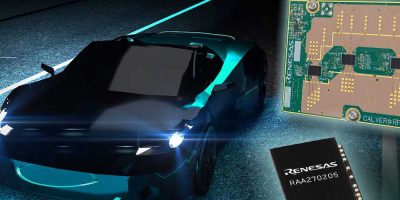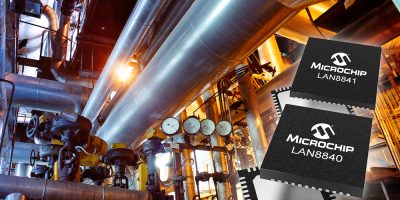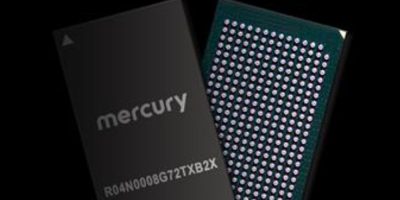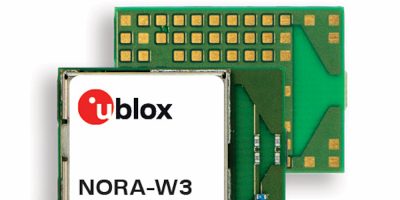Renesas Electronics Corporation is entering the automotive radar market with the introduction of a 4×4-channel, 76-81GHz transceiver designed to meet the requirements of ADAS (advanced driver assistance systems) and Level 3 and higher autonomous driving applications.
Renesas will incorporate the new RAA270205 high-definition radar transceiver into its growing sensor fusion portfolio, which combines radar, vision systems, and other sensing modalities.
Designed in co-operation with Steradian Semiconductors Private Limited, which Renesas acquired earlier this year, the new transceiver MMIC (monolithic microwave integrated circuit) is especially suited for imaging radar, long-range forward-looking radar and 4D radar, but can also be used for corner and central-processing radar architectures, the so-called ‘satellite’ automotive radar systems, said the company. Equipped with 4Tx and 4Rx channels, the RAA270205 supports up to 16 MIMO (multiple-input and multiple-output) channels. It can be cascaded to enable higher channel count and better radar resolution.
The RAA270205 features up to 5GHz of bandwidth and a 112.5MSPS ADC (analog-to-digital converter) sampling rate that it claims is nearly three times faster than those of competing devices. Power consumption of 1.2W is 50 per cent lower than that of comparable transceivers and it delivers a noise figure of 9dB, which is 3dB less than other radar transceivers, it says. Its chirp rate of up to 300MHz/microAs improves radar resolution and object detection.
“Today’s radar transceiver MMICs must achieve higher definition to support the high-accuracy requirements of ADAS and autonomous driving safety platforms,” said Vivek Bhan, senior vice-president and deputy general manager of Renesas’ automotive solution business unit. “Working in close collaboration with Steradian, which brings deep radar design expertise, we are expanding our sensor fusion offerings with a focus on functional safety and low power consumption to help our customers lower their development costs and improve time to market.”
Renesas plans to combine the RAA270205 transceiver with other compatible devices from its portfolio to support automotive radar systems. These combinations will include the satellite radar system for AD/ADAS, which will be available in Q2/2023.
The RAA270205 will be available in 1Q/2023 in sample quantities, with commercial production planned for 2024. The transceiver is available in a small, easy-to-integrate eWLB (embedded wafer-level ball-grid array) package, measuring 7.6×5.6mm. It will be fully compliant with automotive industry requirements such as IATF 16949, AEC-Q100 Grade2 and ASIL B.
Visit Renesas at electronica 2022, Hall B4, 179







